Content
Modern technology for making flour means that the grain is first ground and then sieved through a sieve.
The finer the grinding, the more "ballast substances" can be weeded out.
The most "pure", in this sense, flour - flour of the highest grades.

Fine grinding allows you to filter out absolutely all "impurities", including the flower coat and grain germ (vitamins, unsaturated fatty acids, minerals, etc.), including fiber, leaving only pure starch (carbohydrates).
The nutritional value of such flour (the amount of kcal) is really very high. But from the point of view of the biological value of the product, it is a carbohydrate "dummy".
In such flour, nothing useful and necessary for the body remains. He cannot create new cells from carbohydrates, for this he needs all the variety of macro- and microelements laid down in a whole grain by nature.
MODERN FLOUR VARIETIES
Today, modern industry offers 5 varieties of wheat flour:
- grains,
- premium flour,
- flour of the first grade,
- flour of the second grade,
- wallpaper
and two varieties of rye flour:
- sown
- peeled.
All these varieties, both in the past and in the present, differ from each other in the size of grinding and the ratio of the peripheral parts of the grain (shell and embryo) and flour grain (endosperm).
Wheat flour varieties differ from one another in yield (the amount of flour obtained from 100 kg of grain), color, ash content, varying degrees of grinding (particle size), the content of bran particles, and the amount of gluten.
According to the percentage yield of flour when grinding grain, flour varieties are divided into:
- grit 10% (it is obtained only 10% of the total amount of grain in a volume of 100 kg.),
- top grade (25-30%),
- first grade (72%),
- second grade (85%) and
- wallpaper (about 93-96%).
The higher the flour yield, the lower the grade.

Krupchatka - consists of homogeneous small grains of light cream color, which are particles of endosperm (grains) with a size of 0.3-0.4 mm, does not contain shells and soft powdery particles.
There is almost no bran in it. It is rich in gluten and has high baking properties. Grit is produced from special varieties of wheat and is distinguished by the larger size of individual particles.
It is advisable to use this flour for such products as cakes, pastries, etc. For unsuitable yeast dough, grit is of little use, since the dough from it is poorly suited, and the finished products have poor porosity and quickly become stale.
Flour of the highest grade - consists of finely ground (0.1-0.2 mm) particles of endosperm, mainly inner layers.
It differs from grains in that grains are not felt between the fingers when rubbed.
Its color is white with a slightly creamy shade. Premium flour contains a very low percentage of gluten. The best category of the highest grade is called "extra". Often used as a thickener in sauces and also suitable for baking.
This type of flour is most common in the manufacture of the highest grades of flour products. Wheat flour of the highest grade has good baking properties, products made from it have a good volume and fine developed porosity.
First grade flour - soft to the touch, finely ground, white with a slightly yellowish tinge. Flour of the first grade has a fairly high content of gluten, which makes the dough from it elastic, and the finished products are of good shape, large volume, pleasant taste and aroma.
First grade flour is good for uncooked baked goods. (rolls, pies, pancakes, pancakes, sautéing, national types of noodles, etc.), and for baking various bread products... Finished products from it stale more slowly.
Second grade flour - consists of particles of crushed endosperm and 8-12% of the mass of flour of crushed shells. Flour of the 2nd grade is larger than the flour of the 1st grade. Particle sizes 0.2-0.4 mm. The color is noticeably darker due to the high content of the peripheral parts of the grain - usually white with a yellowish or grayish tint. It is white in color with a noticeable yellowish or brown tint, contains up to 8% bran, it is much darker than the first-class. It is light and dark.
Such flour is better in terms of baking quality - baking from it turns out to be fluffy, with a porous crumb. It is mainly used for baking table varieties of white bread and non-flavored flour products. It is often mixed with rye flour. This flour is used in the manufacture of some confectionery products (gingerbread and cookies).
Wallpaper flour (wholemeal flour) - is obtained by grinding the whole grain.
The flour yield is 96%. The flour is coarser, the particles are less uniform in size.
It is produced from all types of soft wheat varieties, it contains 2 times more bran than flour of the 2nd grade, color with a brown tint. In wallpaper flour, the content of bran particles is the highest.
In terms of its baking properties, it is inferior to varietal wheat flour, but has a higher nutritional value.
The shells of grain contain protein substances, vitamins of groups B and E, mineral salts of calcium, phosphorus, iron, magnesium. The kernel of the grain is rich in starch and contains significantly less protein and other nutrients than its peripheral layers. therefore flour made from whole grain or with the addition of finely ground bran in their nutritional value is significantly superior to high-grade flour.
Wallpaper flour used mainly for baking table breads, and rarely used in cooking.
Coarse wallpaper flour is the largest flour grinding. Accordingly, the wallpaper flour is sifted through a coarse sieve.
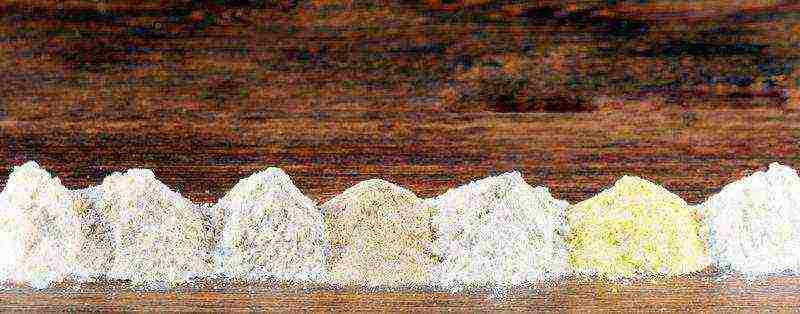
During wallpaper grinding, absolutely all components of the grain remain in the flour. This is the flower shell of the grain, and the aleurone layer, and the grain embryo. Accordingly, all the biological value of whole grain and all its healing qualities for the human body are preserved in wallpaper flour.
Flour is fine and coarse.
Wholemeal flour - whole grain flour. With coarse grinding, almost all the grain is ground into flour, which consists of large particles, contains cell membranes, bran (2nd grade wheat, wallpaper).
Fine flour Is flour from the endosperm, i.e. the inner part of the grain. With fine grinding, white flour, tender, consists of small particles of grain, the outer layers of which are removed (wheat 1st grade, premium grade). Contains mostly starch and gluten, and virtually no fiber.
The finer the grinding and the higher the grade of flour, the less proteins and especially minerals, vitamins, and more starch in it. As for the terminology, the coarsely ground grain is called meal, and the finer grain is called flour.
Flour obtained from a single grinding can be called "whole grain" (since all parts (100%) of the whole grain: fruit and seed coats, embryo, endosperm particles, etc. remain in the flour). However, until recently, it was better known under the names "fodder" or "fodder".
It is worth noting that flour, ground in a mortar, in a coffee grinder or on the rollers of the grinding system at a mill, will be very different from each other, and their baking properties will also differ.
Every hostess who loves to bake something tasty should familiarize herself with this information, since the quality, taste and type of her future baking depend on it. Today we will talk about flour.Do you know which flour is best for baking? How to choose and store it? I propose to read the useful tips of the hostesses, I want to tell you everything I know about flour.
What kind of flour is there and what kind of flour to choose for baking
Literally all commercials assert that the best flour for most types of bakery products is wheat of the highest grade. You should not go for advertising that just wants to sell you the product that the manufacturer has.
In fact, there are a lot of varieties and types of flour, and each of them is more or less suitable for baking a certain product. For example, muffins, pastries and cakes are actually better baked with premium wheat flour. Uncomfortable pastries, as well as pies with various fillings, including sweet ones, are best baked from the first grade. Dumplings and dumplings, pancakes and your favorite pancakes are best cooked from the second grade.
Nowadays, it is not so easy to find the flour of the right grade, since most manufacturers only make it of the highest grade (some even simply write the highest grade, although it is not).
This is if we are talking about wheat flour, but besides it there are many other types, which we will talk about a little later. There is a huge selection of flours that you can buy or make at home: almond, flaxseed, nut, hemp, corn, barley, rye, soy and so on. You can list it endlessly! Each of them is good in its role, because it gives the dish a unique, inimitable taste and aroma. Therefore, do not be afraid to experiment in order to find the best flour for yourself personally, with which each cake will become a work of art, and not a single pancake will be lumpy.
Wheat flour 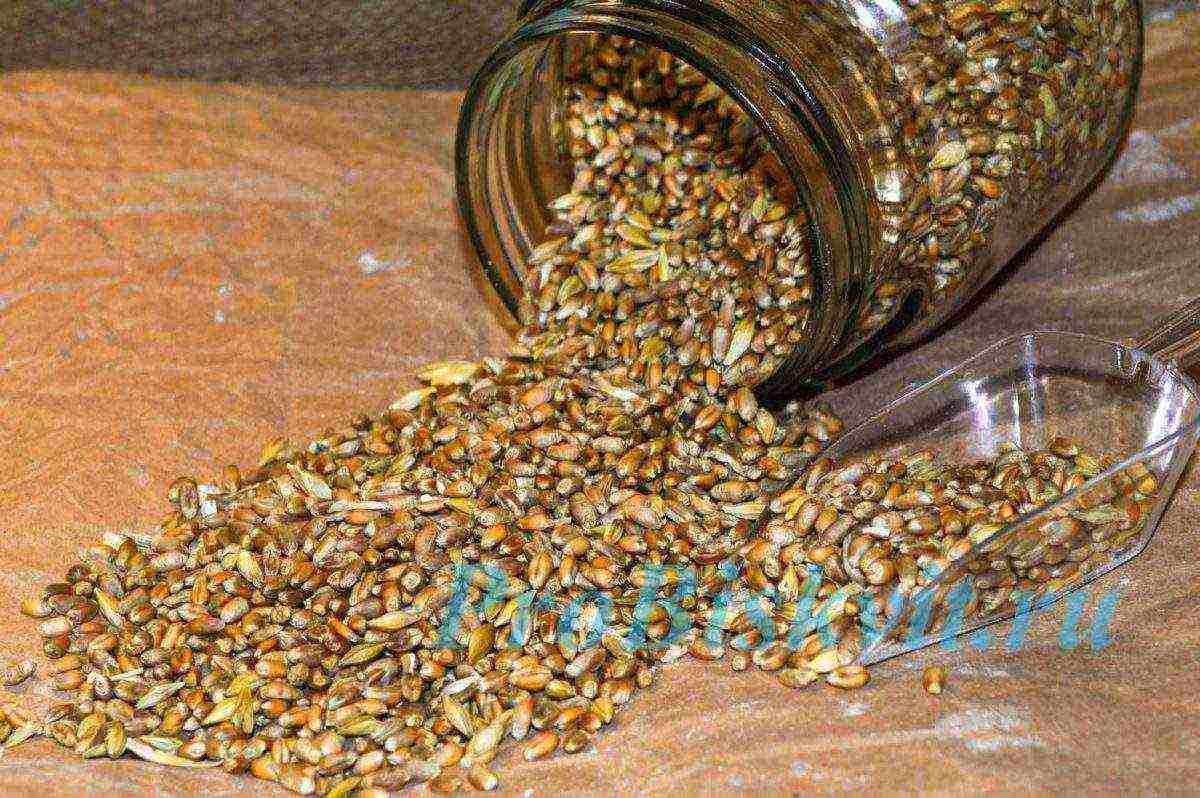
Wheat flour is the most frequent guest of all types in our kitchen. It mainly consists of starch, but thanks to special proteins (glutein and gliadin), which combine with the liquid and turn into gluten (gluten), we get a dough from which we can bake delicious pies, Adjarian khachapuri, pies, yeast and yeast-free bread, other bakery products.
To make a good dough from flour and liquid, it must be kneaded so that the gluten molecules at this moment can connect with each other and form long elastic chains. This transformation requires a sufficient amount of liquid for a certain amount of flour, kneading, salt and time to "rest" the dough.
Sometimes for the dough it will be necessary to minimize the formation of gluten, for this you will need to add very little liquid to the dough and knead it for a short time.
The amount of protein determines whether the flour will be "weak" or "strong". If we need "weak flour" to make the dough, then the protein content in it should be 10-12%. This indicator can be found on each package - the manufacturer is obliged to write. I think you have seen such an inscription on a pack before.
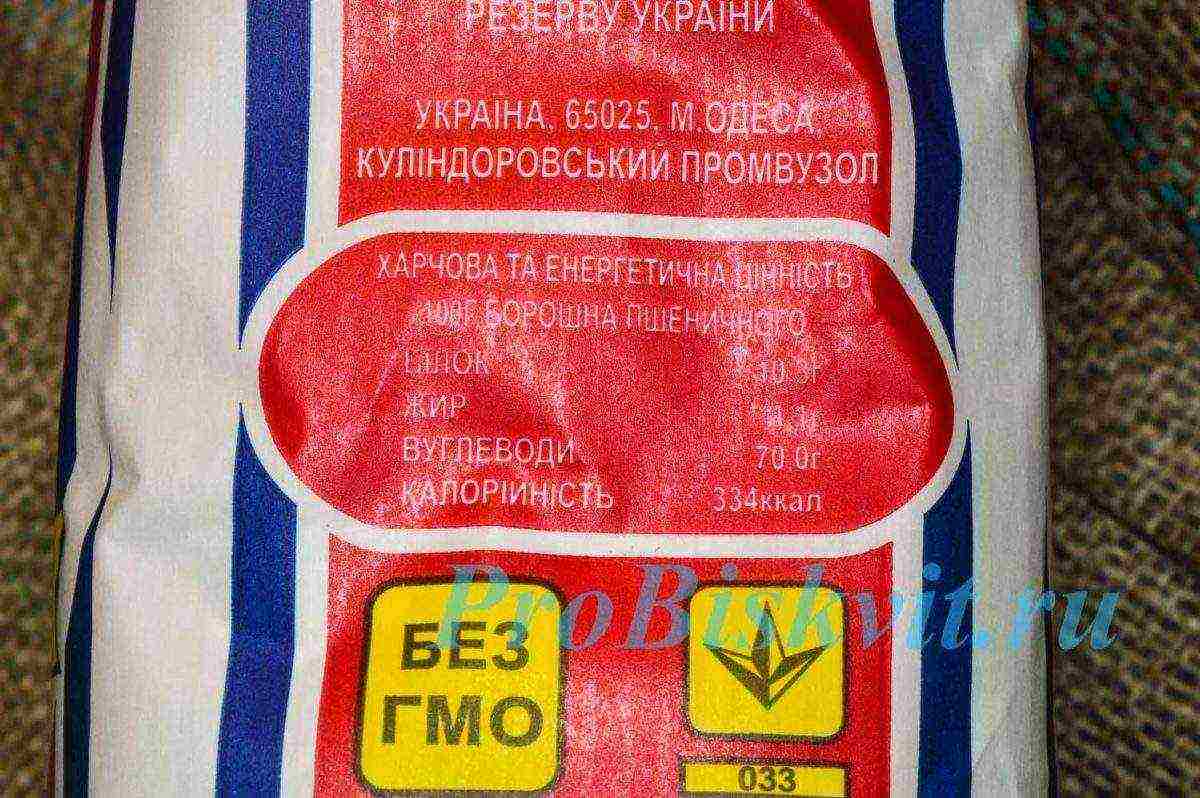
"Weak" flour is a common bakery flour for making confectionery. The less protein it contains, the more crumbly and tender the finished dough will be.
If you need to lower the amount of protein and increase the amount of starch in the flour, then it's quite easy to do at home. Guess how? We replace some of the flour with starch (potato or corn). The amount of starch depends on what percentage of protein we need to get.
"Strong" flour contains 13-14% protein. It is most often used for making yeast dough. It is made from more rare and expensive varieties of wheat. It makes an excellent puff, choux and puff pastry, as this flour contains more protein, and the dough produces more gluten and more long elastic chains. The dough is stronger, stretches easily and does not tear.
“Strong flour” is hard to find here, so you need to look for Italian and Finnish producers.
In addition to protein, flour has another important component - starch.It is an excellent thickener that will show its properties during the temperature rise (during baking) if the right amount of liquid is added. The starch makes biscuits, casseroles, puddings and muffins delicious and tender. Therefore, often in the recipe for biscuit dough, you can find starch, which replaces part of the flour in order to make the biscuit better.
Varieties and types of wheat flour
Flour consists of the central part of the grain, which contains a lot of starch, but very little vitamins. Only it can make a lush cupcake or biscuit. Moreover, in order to increase the amount of starch, it is additionally added, replacing part of the flour. Particle size - 30-40 microns, ash content - no more than 0.55%. White colour. Cooked pastries, as already mentioned, muffins and biscuits, cakes.
First grade. It contains some crushed grain hulls, so it is slightly healthier than the premium grade. Particle size - 40-60 microns, ash content - 75%. The color is white, sometimes creamy with yellowness, rarely grayish. Suitable for making uncomfortable pastries (bread, lean rolls, kulebyak, pies with a filling and pies).
Second grade. There are already more grain shells in the flour mass. than in the previous forms. The grinding is coarse enough. She looks rude. The color is gray, sometimes creamy and even brown. They make waffles, dumplings, cookies, pancakes and pancakes from it. The dough turns out to be coarse, and the pastries get stale quickly. Not suitable for making biscuits or muffins. It is better to mix the second grade with the highest or the first, so that the products are more magnificent. Ash content - 1.1-1.2%. This variety is mixed with rye flour to make rye baked goods.
Wallpaper or whole grain. The most useful, as it contains the most useful parts - the embryo and shell. The particle size is 30-60 microns. Products made from it are tough, so whole grain flour is mixed with the first, second or even the highest grade.
Krupchatka. It is very difficult to buy it. They make noodles and dumplings from it. Not suitable for making bread (non-flavored yeast baked goods). Products made from it become stale very quickly, and the dough itself does not rise well.
How is whole grain flour different from regular flour?
Whole grain - one that was obtained by a single grinding of wheat grain together with the shell or any other cereals, has a fairly high level of gluten. It is considered one of the most useful varieties of flour (much more useful than ordinary flour). It is dark and rough and requires more moisture than normal. Whole grain dough cannot be elastic, and finished products are coarser and harder. It is rational to use for the dough whole grain and premium flour in equal amounts, unless otherwise provided by the recipe.
What is flour other than wheat 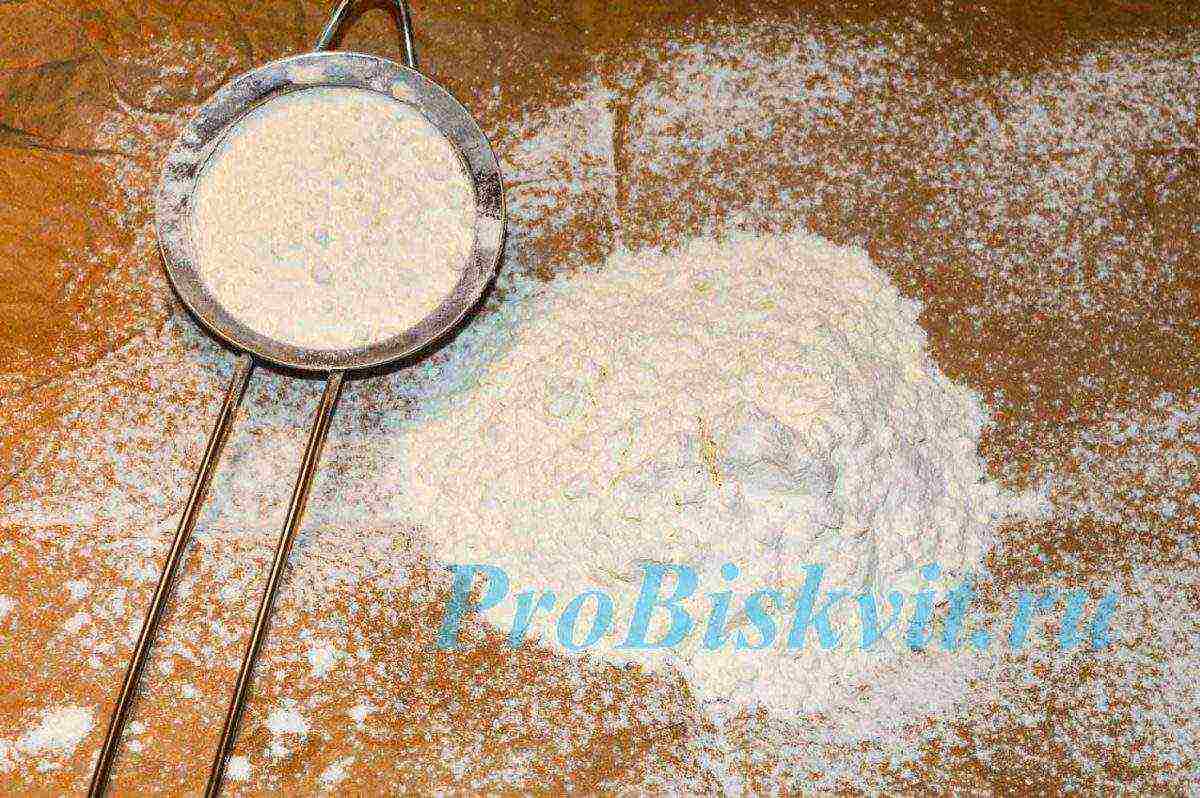
- Buckwheat. It does not contain gluten and is a favorite among dieters. Very pleasant to handle, with a slightly nutty smell. Now, if you are asked what kind of flour is gluten-free, you can confidently answer - buckwheat.
- Rice. It is made from grains of rice, by grinding, two types of rice: standard white and brown brown.
- Barley. Has a light nutty taste, makes baked goods soft. It is suitable for making pancakes, biscuits and “quick” breads.
- Rye. It absorbs a lot of water, which makes the dough sticky. Bread is baked from it, which turns out to be denser with a characteristic taste and aroma. In addition to bread, it is used to make muffins, rolls and pancakes. According to the degree of grinding and the content of bran, it is divided into varieties: peeled, seeded and wallpaper. If before you did not know what wallpaper flour means, now you will know that this is one of the types of rye flour.
- Corn. There are two types: fine grinding, from which baked goods are obtained of a beautiful yellow color with a characteristic delicate corn taste, and coarse grinding, from which dense and slightly grainy bakery products are baked.Most often, Mexican tortillas, bread, rolls and other baked goods (even dietary ones) are prepared from corn flour.
- Soy. It can be fried (with a bright taste) and not fried, which I use to make yeast bread. It has a white color, and products made from it do not stale for a long time and have a beautiful crust. Can replace eggs and milk in dough.
- Spelled or spelled flour (spelled). It is made from wild wheat varieties. They cook buns, pies, and pizza.
- Oatmeal. Can be made by pitching oatmeal in a coffee grinder. Used to make oatmeal cookies.
- Almond. Made from almonds. It is difficult to buy, but you can cook at home. You can make pies from it, as well as the famous macarons.
- Linseed. Has a distinct nutty flavor. Sometimes this flour is substituted for eggs, as it has good binding properties. Add to puddings, casseroles, bread.
How to choose flour 
To choose a good flour product that will be stored for a long time without losing its properties, and products made from it will be tasty and healthy, you need to be able to choose. We pay attention to the following points:
- Environment. The room in which flour products are sold must be dry, clean, free of foreign odors and high humidity.
- Shelf life. Flour can be stored for 6 months without preservatives. Don't trust the manufacturer. who wrote that the expiration date is 1 year or more.
- Colour. Must match the type and variety. For premium wheat, it is white with a slight creamy tint. If you drop a drop of water on the flour and it turns blue, then this is a clear sign that it was made from unripe grain. If the color during the experiment is not blue, but red, then bran was added to the composition. If the color has not changed, then we are dealing with a quality product.
- To the touch. Squeeze the flour mass in a fist. It should crunch. If, after unclenching in your palm, the mass turns into a lump, then this is a clear sign that it is wet. Such a product has lost the desired properties and there is no need to buy it.
- Smell. Should be pleasant, matching the aroma of flour. There should be no smell of rot, mustiness or sour dough.
- Taste. Good wheat flour has a sweetish taste. If there are impurities in it, then they can crunch on the teeth.
Why is flour bitter or how much flour is stored 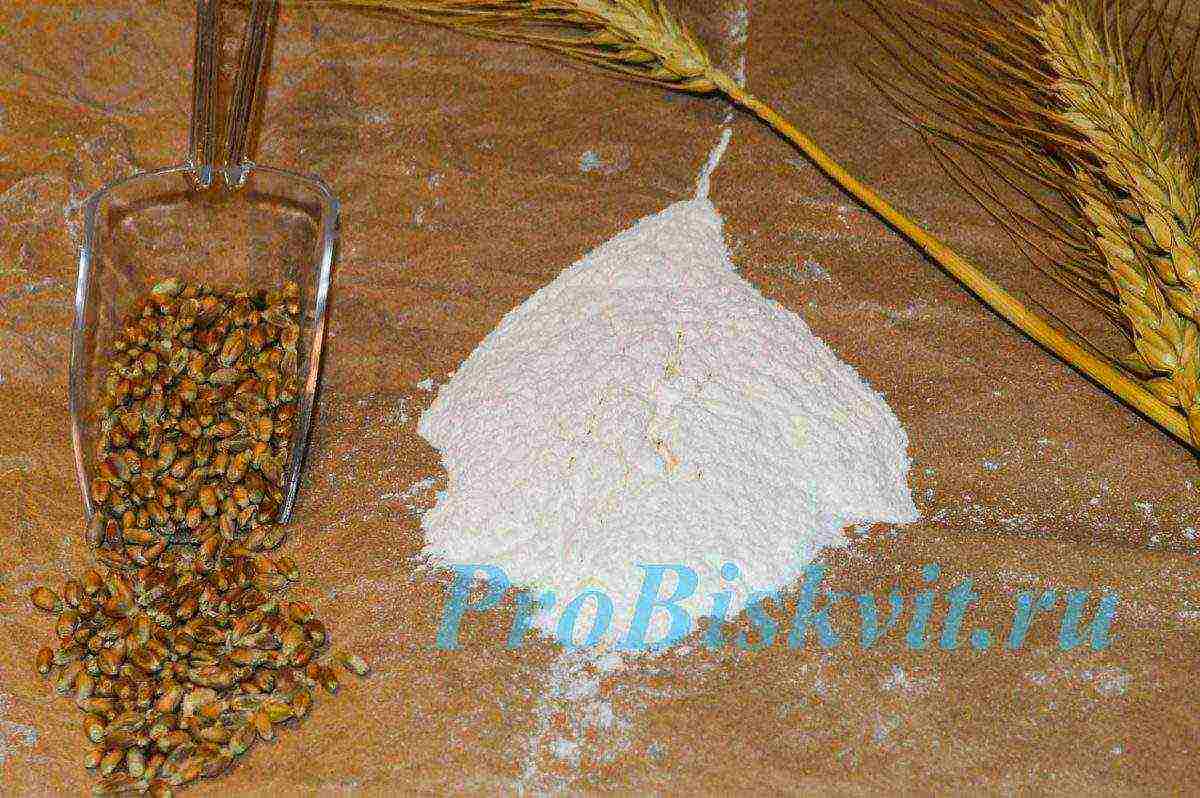
After you bought a flour product, you need to find out how to properly store it, otherwise the product may deteriorate and become bitter, absorb foreign odors, and absorb moisture from the air in the room. This product is not suitable for use and must be discarded. Therefore, it is not recommended to purchase flour for future use.
- Storage must necessarily take place in a dry and cool place. The storage period is generally limited to about six months. Do not store the flour mass open to avoid oxidation of oils. After all, because of this, all properties of the product are violated.
- You need to store it in paper bags or linen bags. Do not store in polyethylene!
- If you are pouring flour from a bag, then always choose a jar with a lid that closes very tightly! It is also allowed to freeze flour for forty-eight hours in order to get rid of all insects and destroy their eggs. It is not recommended to mix flour that was opened a long time ago with flour from a new package, it is better, before starting a fresh batch, completely get rid of the old one.
- Do not store near household products: soap, detergent; also, you do not need to store it next to onions, because all these products emit a pungent smell, and the flour absorbs everything very quickly.
- It is allowed to freeze flour products in the freezer. Thus, extending the shelf life by two or three times.
- Temperature changes should not be allowed (especially sharp changes when condensation forms and the flour mass damp).
- It is imperative to keep whole grain flour in the refrigerator, because at elevated temperatures, even if it is room temperature, the oils contained in the flour give it a bitter taste.
- Be sure to throw away flour if it changes color or smell.
- There is one tiny trick: to protect against insects, put a small bay leaf in a container of flour, because these plants are a weapon for eliminating insects. For the same purposes, you can place heads of garlic next to the flour.
- The optimum temperature is +18 degrees. If you store the flour mass at a temperature of 0 degrees, then the shelf life will no longer be 6 months, but 2 years.
Now, I think you know all about flour. You know how to choose flour, how to store it, what it is and which flour is best for a particular baking. I am pleased to invite you to other sections of my site, where you can find delicious baking recipes and apply the new knowledge gained from this article.
Save
Save
Save
Save
Save
Save
Save
Save
Save
Save
Save
Of course, you can carefully read the composition (if specified). Study the expiration date: Experienced housewives say that the best flour is the one that was made a week or at least a month ago. But by and large, these two parameters do not guarantee successful pies. Flour from the same manufacturer, with the same name, can be different. At the exit, the quality will depend on how the flour was ground, and on what it was transported in, where it was stored. In one store, the batch will lie in a dry room on wooden pallets, in another - on the floor in a damp basement, and now someone will get airy flour, crumbly, and someone - with lumps. To figure out whether you were lucky this time or not, it will only work at home. After…
✓ Open the package and carefully look at its contents. Flour of the highest grade (this is what our today's expertise is devoted to) - snow-white or with a cream shade, there are no lumps or impurities in it.
✓ Smell the flour. The right flour smells like endless fields, free wind and bottomless sky with cloud feathers. And the wrong one - a musty basement ...
In general, if it has deteriorated, you will definitely feel it. Flour, by the way, easily absorbs odors. Therefore, if it was stored or transported with something wrong, you will also unmistakably determine that.
✓ Touch. The good-quality flour is dry and silky to the touch. It sticks to your hands, and if you squeeze it with your fingers, it crunches melodiously.
✓ Try it. To taste, the correct flour is almost bland or slightly sweet, without a bitter or sour aftertaste. If it crunches on the teeth, there is sand or other mineral impurities in the flour - they come from poorly refined grains, which, of course, is unacceptable.
Important indicators
In laboratories, in order to determine the quality of flour, it is not only sniffed and touched, but also passed through devices and sifted. As a result, such parameters are added to taste and smell as ...
1. Moisture content. If this figure is too high, the flour can quickly deteriorate. Ideally, humidity should not exceed 15%.
2. Coarseness of grinding. Fine flour absorbs moisture faster, which means that the dough kneads and fits faster.
3. Falling number (NP). Knowing it, you can predict how the bread crumb will turn out. With an emergency of less than 250 seconds, the crumb will stick together, and the bun itself will turn out to be low. In case of emergency for about 250 seconds, the crumb, if you press on it with your finger, will quickly restore its shape. But with an emergency of about 400 seconds, it will be dense, and the bun will be firm and, moreover, with an unimportant taste.
4. Mass fraction of gluten. The higher the grade of flour, the more gluten it contains and the more magnificent the baked goods are. In premium flour, gluten is 28% or more, in general-purpose flour - about 23%, and buns made from it are not so airy (however, this flour is healthier).
Five varieties of wheat flour
Krupchatka. It is produced from special varieties of wheat and has a large particle size. Rich in gluten, suitable for baking cakes and pastries. But the uncooked yeast dough made from such flour does not suit well, besides, the bread quickly becomes stale.
Flour of the highest grade. It has the finest grind and the whitest color. It has a very low percentage of gluten. It is used as a thickener in sauces and is also suitable for puff pastry, shortcrust pastry and yeast dough. Ideal for baking bread.
First grade flour. Compared to premium flour, it contains more sugars and fiber. Suitable for uncooked pastries - rolls, pies, pancakes. Products from it do not stale longer.
Flour of the second grade. Contains up to 10% of grain shell particles. Suitable for baking table types of bread and uncomfortable flour products. It is often mixed with rye flour.
Wallpaper flour. It has the coarsest grind and is made up of all parts of the grain, which is why it is commonly referred to as whole grain. For obesity, diabetes and heart disease, doctors advise eating bread from this flour.
How it all began
The very first device for making flour was a grain grater - a primitive mechanism of two stones, between which grains were ground. The first mills appeared 3-4 thousand years ago. At first, they were rotated by slaves and pets, then they began to use the energy of water and wind. In the 18th century, Scottish mechanic James Watt "crossed" the mill with the steam engine he invented. In 1822, Mark Miller from Warsaw made a fundamentally new flour mill, replacing stone millstones with light rollers - hollow metal drums, between which the grains were ground into flour. This technology is still used today.
A word to an expert
Tatyana ANOKHINA, head of the test center of the SEAC "SOEKS" of the Chamber of Commerce and Industry of the Russian Federation.
Wheat flour of the highest grade is the “poorest” one. It is extremely low in protein, vitamins and minerals. But it is the most popular, and only from it lush biscuits and mouth-watering buns are obtained. Six samples of such flour have been tested in our laboratory. In terms of safety indicators, all of them comply with the requirements of the technical regulations of the Customs Union TR CU 021/2011 "On food safety", all comply with the requirements of GOST R 52189-2003 "Wheat flour. General technical conditions ". We did not find any foreign impurities or GMOs of plant origin in them. It was extremely difficult to choose the winners: the subjects were very worthy. We were able to determine the first, second and third places only when we summed up the best indicators. As a result, the gold went to Makfa flour, silver to Sokolnicheskaya, and bronze to Nordic, largely due to the fact that this flour is made from organic grain.
Text by Evgeny Danilov
Test: wheat flour *
| JSC "Melkombinat in Sokolniki", Moscow | JSC "MAKFA", Chelyabinsk region | OJSC "Lukhovitsky flour mill", Moscow region | ZLAK Combine of Bread Products, Chelyabinsk Region | JSC "Petersburg Mill Plant", St. Petersburg | Finland |
| 12 months | 12 months | 6 months | 12 months | 12 months | 12 months |
| Not detected | Not detected | Not detected | Not detected | Not detected | Not detected |
| 55 | 58 | 56 | 54 | 54 | 55 |
| 10,6 | 11,3 | 11,6 | 10,9 | 14 | 11 |
| 30 | 33 | 28 | 28 | 30 | 28 |
| 318 | 524 | 413 | 397 | 394 | 396 |
| 1 | 0,5 | 0,9 | 1,5 | 3,5 | 2,2 |
| Sokolnicheskaya will be stored longer than competitors - it contains very little moisture. Add to this the excellent grind and the best falling number (it affects the quality of the future crumb), and it turns out that this contestant is one of the best today. | This flour is the leader of today's competition. Moreover, it is the leader in several indicators at once: whiteness, grinding coarseness, gluten content. Baking from it will turn out soft and fluffy. Congratulations to the winner! | The shorter the shelf life, the better. This rule does not apply to flour. It is usually stored for a year. Lukhovitskaya is slightly inferior in terms of indicators to most of the competitors - perhaps that is why the manufacturer has reduced its shelf life. | The grinding coarseness and moisture content of this flour are at a height, but the rest of the indicators are average. Before us is such a classic middle peasant. For such a price - quite a satisfactory result. | This flour has the largest grind, which means that the dough from it will ripen longer. The moisture content is also quite high. But this does not mean at all that this flour is of poor quality. All her indicators are within the normal range. | It's nice that this flour is organic (hence such a high price). You can eat homemade buns and think that they are healthier than those that Aunt Klava's neighbor has. Perhaps, this contestant is no different from the others. All indicators are average. |
* Thank you for your help in conducting the SEAC "SOEKS" test
← Click "Like" and read us in
Reviews
What to look for when choosing flour, what varieties are there, what properties this or that variety has and how to properly use different types of flour when baking.
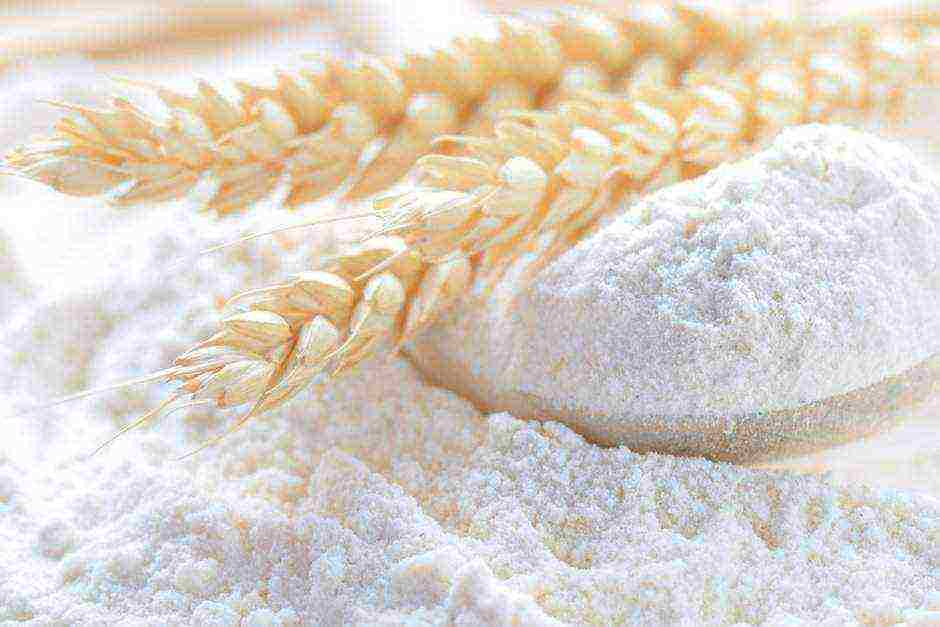 When buying flour, few people look at what is written on the package. At best, they pay attention only to the variety. At the same time, many people think that the higher it is, the better. But is it?
When buying flour, few people look at what is written on the package. At best, they pay attention only to the variety. At the same time, many people think that the higher it is, the better. But is it?
Let's sort things out in order. What is flour, what types and varieties are it? Which one is better to choose for making bread, cakes, buns, muffins and other products?
Flour is a food product that is obtained by grinding wheat and rye grains. Buckwheat, oatmeal, corn, pea and soy flour are produced in limited quantities. Wheat flour is mainly used, less often other types.
Rye flour is used to make bread. Buckwheat and rice flour are used for diet meals and baby food. The rest of the types are used for special products.
What should you look for when buying flour?
First of all, you should pay attention to the variety. There is an opinion that the quality of baked goods is better from the flour that is of higher grade. And there is. Only in composition it will be poorer. For example, in the lower grades of flour, vitamins B1, B2 E and PP are preserved, while in the flour of the 1st grade and the highest grade they are practically absent.
Top grade
Premium wheat flour contains negligible amounts of fat, fiber, sugar and protein. But it contains a lot of starch (about 80%). This type of flour is distinguished by its white color and excellent baking properties. The baked goods are voluminous with fine porosity.
It is good to make yeast, puff and shortbread dough from it, as well as flour dressings.
Krupchatka
It is made from special varieties of wheat. It is distinguished by the larger size of individual particles and a light cream shade. Also has excellent baking properties and is rich in gluten.
It is good to bake buns and cakes from grains. In general, yeast doughs where a high content of fat and sugar is used. It is better not to use it for other products, since the dough will not fit well. Finished products are obtained with insufficient porosity and stale very quickly.
First grade
It is considered the most common. This flour contains more protein (about 15%), sugar (up to 2%), fat (1%) and fiber (about 0.3%). The starch in the first grade flour contains on average 75%. The color of the first grade flour can be from pure white to white with a grayish and yellowish tinge.
It is good to cook non-rich pastries from it: pies, rolls, pancakes, pancakes, some types of national noodles. It is also suitable for baking bread products. From such flour, they do not stale so quickly.
Second grade
Contains protein up to 16%, fat up to 2%, sugar 1.5-2% and fiber on average 0.7%. Slightly less starch (70-72%). Flour has a light grayish, yellowish or brown tint.
Flour of the second grade is used most often for baking non-rich flour products and table varieties of white bread. Also flour of the second grade can be diluted with rye flour. Then excellent gingerbread and cookies are obtained from it.
Wallpaper flour
This flour grinding differs from others in that it consists of the same fabrics as wheat, and is very close to it in composition. It is rather large and non-uniform in particle size. In cooking, such flour is rarely used. Basically, bread is made from it.
When buying flour, you need to know the shelf life and the date of manufacture.
If you are looking for a quality, fresh product, then pay attention to the expiration date of flour. It can only be stored for six months.
In the case when a shelf life of 10, 12 or 18 months is indicated on the package, then a stabilizer is added to it. Manufacturers add it to extend shelf life.
Recommendations on the packaging
Sometimes on the packaging with flour they write recommendations for its use. Usually, this information is indicated for rare types of flour: corn, oatmeal, buckwheat, rice, pea and soy.
Another important point is the composition of the flour
If flour consists of different mixtures, then the manufacturer must indicate this information on the packaging.
Pay attention to pancake flour - it may contain additional products (egg powder, salt, soda, sugar, milk powder).
Little advice
Sift flour before using it. This will enrich the flour with air, loosen and dry it. This procedure is essential for excellent fermentation.


